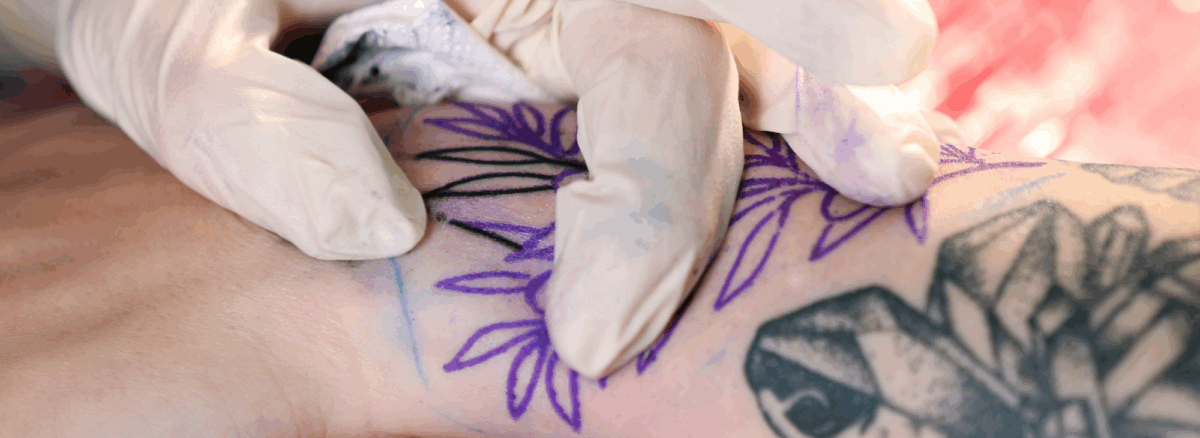A smart, skin-conscious look at safe body art, summer healing, and what to ask before you commit.
Nearly a third of U.S. adults have at least one tattoo, according to Pew Research, and plenty more are thinking about it. Whether it’s your first ink or your tenth piercing, tattoo or piercing care matters because body art marks a moment, tells a story, or just feels like a natural part of who you are.
And for a lot of people, summer feels like the perfect time to go for it. You’re feeling free, soaking up the sun, maybe even on vacation.
But is it safe to get a tattoo or piercing in the summer?
Quick Answer:
Tattoos and piercings are more than personal; they’re medical. Healing skin is vulnerable, especially in summer when sun, sweat, and swimming can stir up trouble. To keep things safe (and looking good), choose an artist who follows strict hygiene, explains aftercare clearly, and talks openly about risks like infection or allergic reaction. Ask questions. Pay attention to how your skin feels. The better your care, the better your body art heals.
But here’s the part many folks don’t think about until it’s too late: summer doesn’t always play nice with healing skin.
Let’s walk through what you need to know before you get tattooed or pierced, especially during hotter months, so your new addition stays something you love, not something your skin regrets.
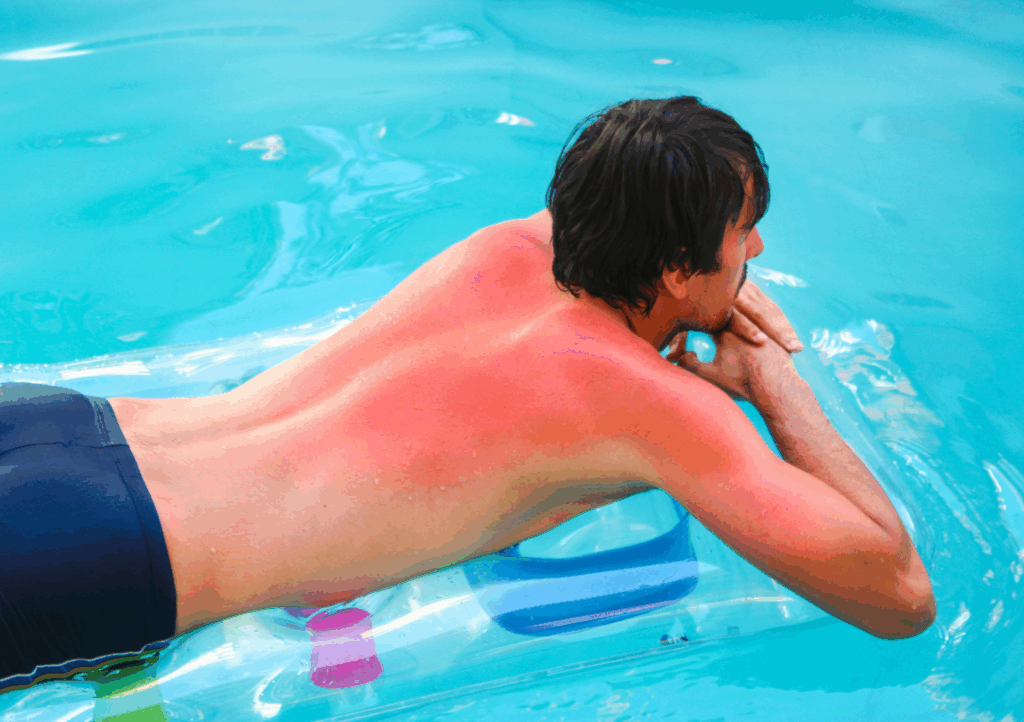
Why Summer Can Be a Bit Rough on Healing Skin
A fresh tattoo might look finished, but your skin’s just getting started. It’s technically an open wound. And piercings? Also, small wounds. When healing, your body’s trying to close up, block out bacteria, and build new skin, and summer throws a few extra challenges in the way:
- Swimming? Not yet: Pools, lakes, oceans, even a quick soak in a hot tub, can introduce bacteria into healing skin.
- Too much sun: UV rays can damage a healing tattoo, fade your ink before it settles, and cause rashes or reactions.
- Sweat and friction: Heat plus rubbing (from clothes, bags, straps, etc.) can create the perfect storm for irritation.
It’s so easy to forget this when you’re staring at your new ink, feeling good, and standing next to a lake with 95-degree weather bearing down. One quick dip, one skipped sunscreen application, and suddenly things go from “that’s a little red” to “why is this hot, itchy, and oozing?”
Infections can sneak in through broken skin, especially if aftercare gets skipped or you’re exposed to bacteria while swimming or sweating. Curious what kinds of germs can cause trouble and how your body reacts? Here’s a quick breakdown of the 4 types of infection to know about.
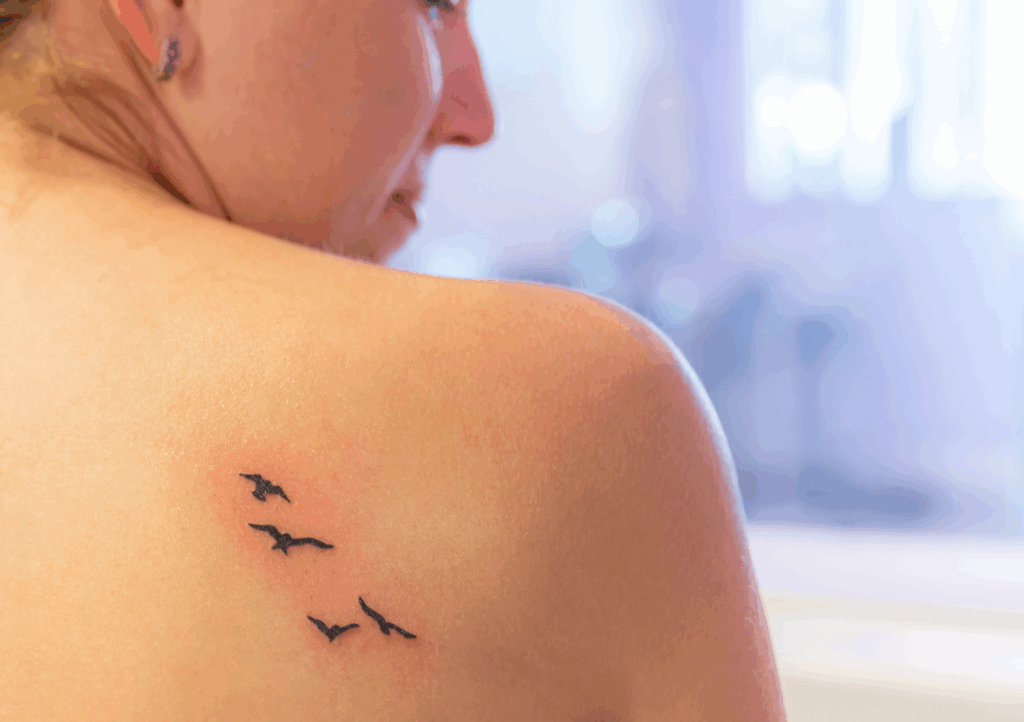
Not Every Reaction Is a Problem, But Some Are
Healing doesn’t always look perfect. And honestly, that’s normal. But it helps to know the difference between your skin doing its job… and your body waving a red flag.
Here are reactions that catch people off guard:
- Red ink flare-ups: Red pigment tends to be the most reactive, causing redness, bumps, or itchiness, even weeks later.
- Ink migration: Blurry tattoo lines spreading under the skin? That’s ink migration, usually harmless, but sometimes disappointing.
- Keloids or raised bumps: Scarring is more common in high-friction areas.
- Delayed rashes or irritation: Sometimes tattoos heal beautifully, only to flare up later due to sun, lotion, or stress.
If something looks off, don’t panic, but don’t ignore it. If it’s getting worse instead of better, check in. Your tattoo artist or a healthcare provider can guide you.
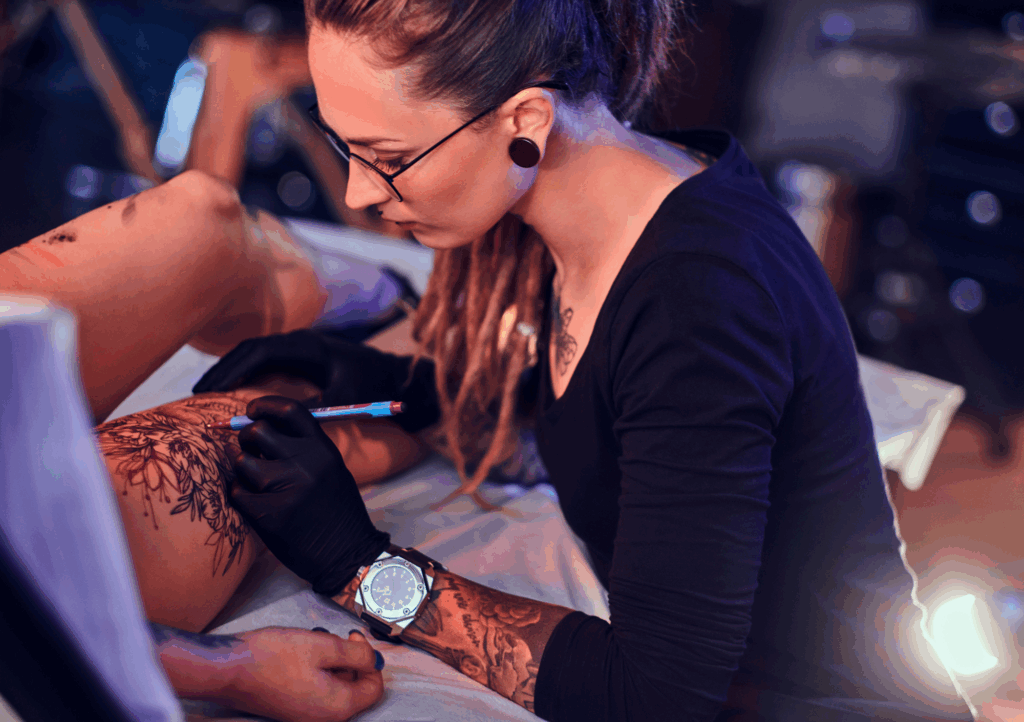
Travel Tattoos Are Trending, But Are They Safe?
These days, people don’t just plan trips around food or festivals—they’re planning them around tattoos. And honestly? It makes perfect sense. It’s not just impulse ink anymore; people are scheduling entire trips around appointments with specific artists.
A recent Life Is Suite article highlighted how tattoos have become meaningful travel souvenirs, with fans booking years in advance for fine-line specialists in LA, spiritual tattoo masters in Bangkok, or whimsical custom artists in London.
Social media makes it easier than ever to discover talented tattoo artists worldwide. If there’s someone with a signature style you love, why not turn your appointment into part of a memorable adventure? Some call this trend “tattourism,” and it’s particularly popular among Millennials and Gen Z looking for highly personalized art.
And hey, if you’re going to spend the money and take the time, why not turn it into a story?
Just remember: even if the vibe is relaxed, hygiene shouldn’t be. Studios abroad may follow different safety regulations, and “pop-up” booths in tourist-heavy areas aren’t always known for cleanliness. Always ask about sterilization methods, single-use needles and ink cups, and recommended aftercare, especially if you’re flying soon after.
You can absolutely collect art from all over the world; just don’t bring back a foreign bacterial strain as a souvenir.
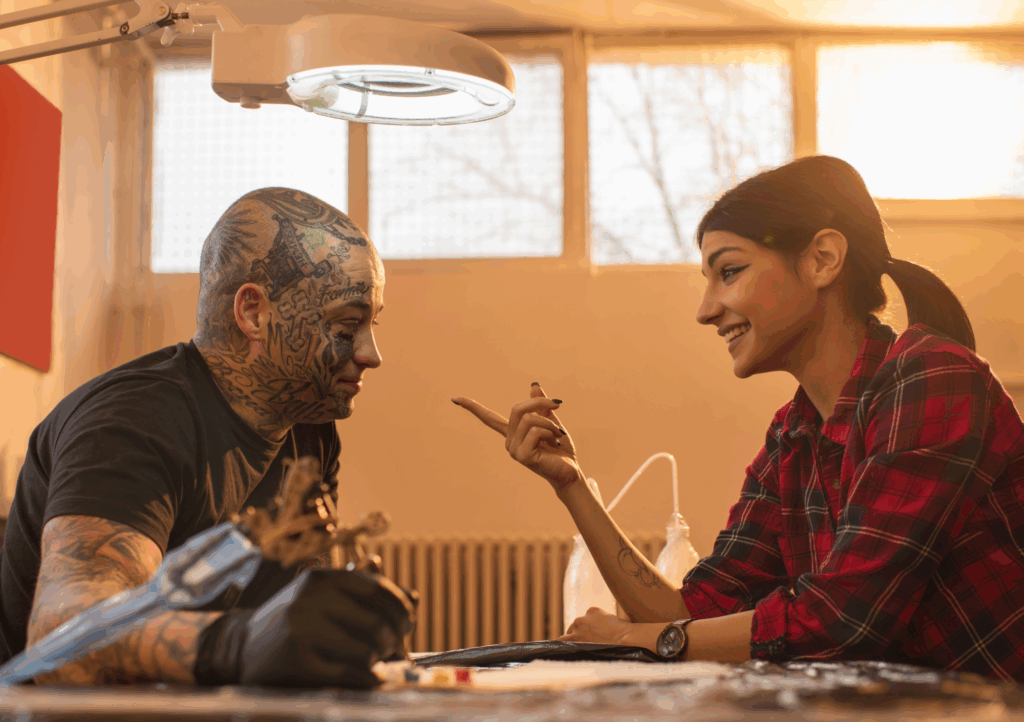
5 Smart Questions to Ask Before You Get Inked or Pierced
Whether you’re booking with a trusted local artist or walking into a studio while on vacation, asking the right questions can make all the difference. These five questions are a solid starting point for safe tattoo or piercing care, especially when getting work done in a new place or during hot weather.
Here’s what to ask before the needle comes out:
- How do you sterilize your tools and space?
(Look for fresh gloves, single-use needles, and individually poured ink caps. Clean, clean, clean.) - What kind of ink or jewelry do you use?
(Some pigments and metals are more likely to trigger reactions. It’s okay to ask about ingredients.) - Can I see examples of your work that have been healed?
(Fresh ink always looks good, healed work shows you how their art holds up.) - What’s your aftercare advice, especially for summer?
(They should give you more than just a pamphlet. Good artists walk you through what healing actually feels like.) - What should I watch for that might mean something’s wrong?
(They should be honest about when to call them and when to see a medical provider instead.)
Piercing studios should follow the same hygiene rules, with sterilized tools (autoclaves are ideal), quality jewelry, and trained professionals, not a part-time employee with a piercing gun.
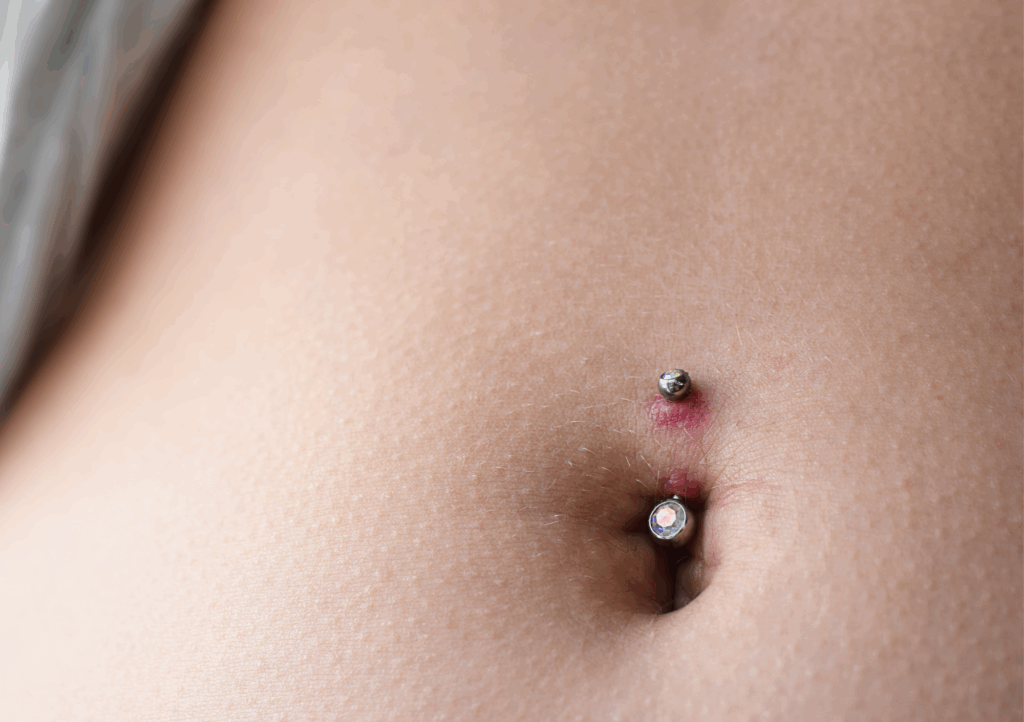
How Do I Know If My Tattoo or Piercing Is Infected?
Even with the best artist and best aftercare, things can go sideways. It doesn’t mean you did anything wrong; it just means your body needs a little help.
Here’s when it’s time to check in with a medical provider:
- Redness, swelling, or pain worsening over time
- Heat, pus, or discharge
- Rash or hives spreading beyond the area
- Fever or chills
- Pain that’s deep, sharp, or persistent
Infections and allergic reactions usually respond quickly if treated early. Skin red, hot, or painful? That might be more than just irritation. Here’s how to tell if it’s a staph infection, and when it’s time for the ER.
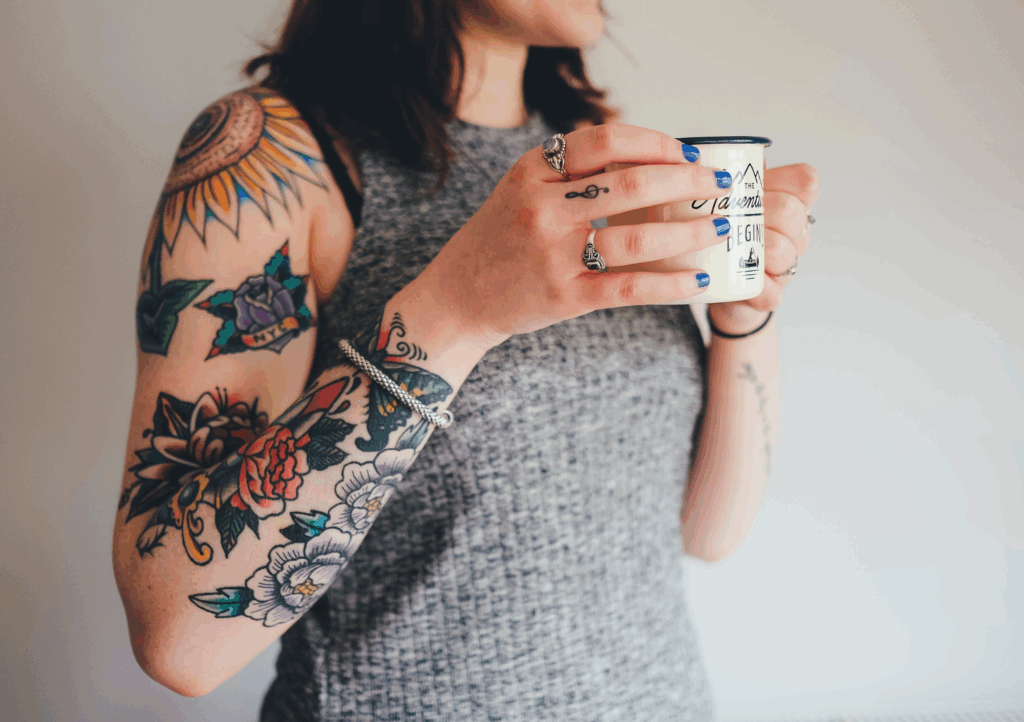
Tattoos Are Everywhere, Let’s Keep Them Looking Good
Tattoos have gone mainstream, across generations, professions, and personal stories. Whether yours is a carefully planned piece or a spontaneous memory from vacation, it deserves real care and attention.
So before you book, ask the questions. Afterward, follow the healing advice (even if you think you’ll be fine). And if something doesn’t feel right, don’t shrug it off.
Your skin tells your story, make sure it’s one you’re proud of.


